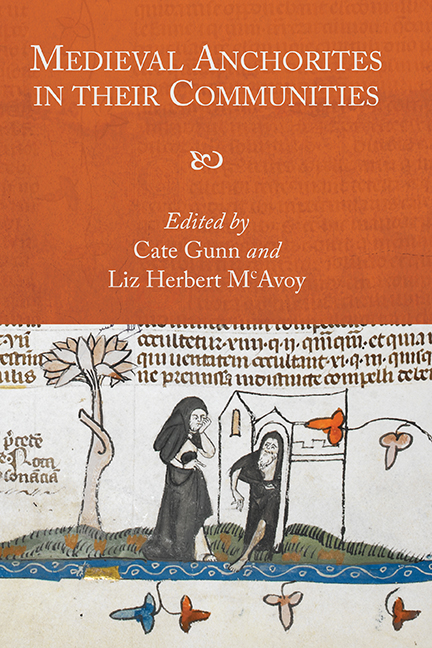Book contents
- Frontmatter
- Dedication
- Contents
- List of Illustrations
- Acknowledgements
- List of Contributors
- Abbreviations
- Introduction: ‘No Such Thing as Society?’ Solitude in Community
- 1 ‘O Sely Ankir!’
- Part I Religious Communities
- 2 The Anchoress of Colne Priory: A Solitary in Community
- 3 Anchorites in their Heavenly Communities
- 4 Rule Within Rule, Cell Within Cloister: Grimlaicus's Regula Solitariorum
- Part II Lay Communities
- Part III Textual Communities
- Bibliography
- Index
- Miscellaneous Endmatter
2 - The Anchoress of Colne Priory: A Solitary in Community
from Part I - Religious Communities
Published online by Cambridge University Press: 30 August 2017
- Frontmatter
- Dedication
- Contents
- List of Illustrations
- Acknowledgements
- List of Contributors
- Abbreviations
- Introduction: ‘No Such Thing as Society?’ Solitude in Community
- 1 ‘O Sely Ankir!’
- Part I Religious Communities
- 2 The Anchoress of Colne Priory: A Solitary in Community
- 3 Anchorites in their Heavenly Communities
- 4 Rule Within Rule, Cell Within Cloister: Grimlaicus's Regula Solitariorum
- Part II Lay Communities
- Part III Textual Communities
- Bibliography
- Index
- Miscellaneous Endmatter
Summary
COLNE Priory in north Essex was excavated by the Channel 4 TV's Time Team, broadcast in March 2012; in the programme, it was suggested that the cell of an anchoress may have been attached to the priory church. A paper I subsequently wrote for the Essex Society for Archaeology and History examined the evidence – slim as it was – for the existence of a female anchorite at Colne Priory; while there was evidence for the existence of an anchoress in the area, it was not possible to prove conclusively that she had been enclosed at the male Benedictine priory. However, the trace of a room that may have been an anchorite's cell was found; the possibility that an anchoress lived there raises interesting questions about the spirituality of solitary enclosure and its relationship with the community, religious or parochial.
The argument for the presence of an anchoress at Colne Priory is worth briefly revisiting. During the excavations featured on Time Team, a ‘mysterious room’ on the north side of the nave of Colne priory church, just to the west of the crossing, was seen in the geophysical survey; a trench was dug, but although the outer wall of the church to which the room was attached was found, there was no evidence of the walls of the room itself. It may have been a wooden structure intended to last only the lifetime of one occupant: there is no mention of another anchorite occupying a cell at the priory at a later date. The evidence of the geophysical survey suggested that the cell measured just four metres by one-and-a-half; at first it was thought that this might be a private burial chapel. If it were an anchorhold, it was a small space in which to spend years enclosed, though not without precedent. The cell in which the early twelfth-century anchoress, Christina of Markyate, spent more than four years was even smaller, a room tucked in the corner between two walls: ‘amplitudo plus palmo semis inesset’ [‘the space was not bigger than a span and a half’], and Anne Warren gives two examples of very small, ‘restricted’ cells.
- Type
- Chapter
- Information
- Medieval Anchorites in their Communities , pp. 37 - 52Publisher: Boydell & BrewerPrint publication year: 2017



